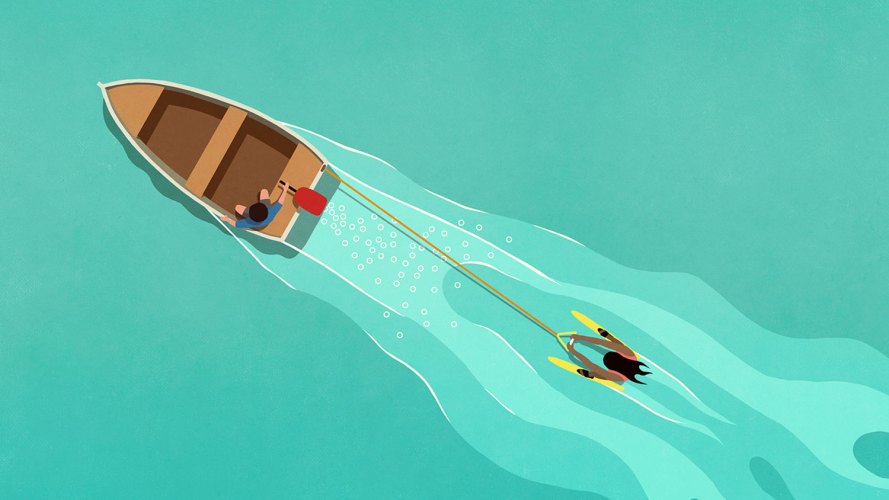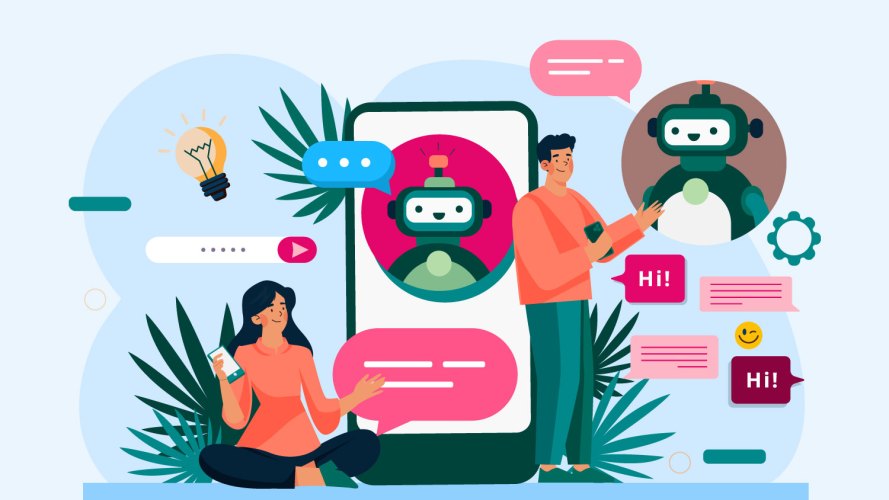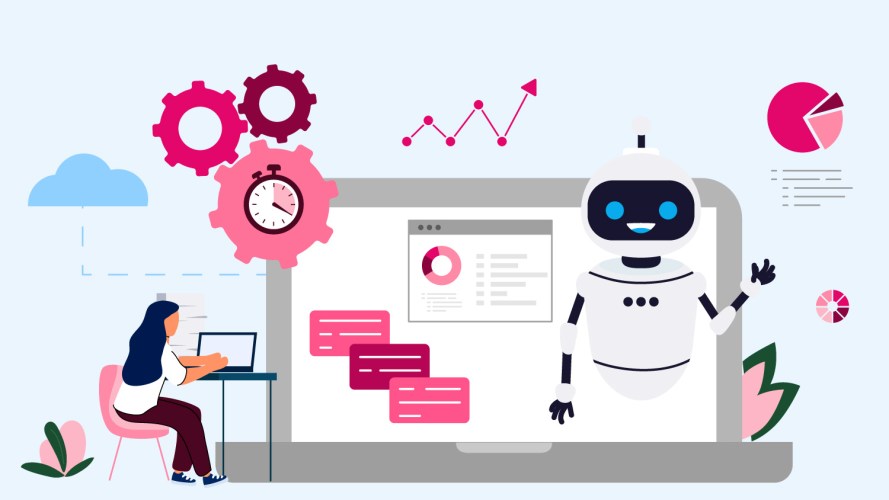Business Strategy, Two Ways: Leaders Go Head-To-Head on Personalization, Gen Z, and Tech
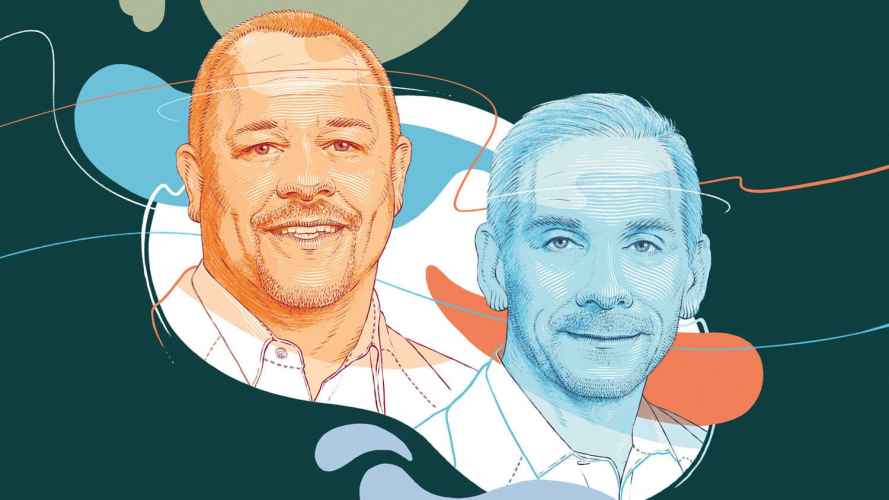


Top execs from two very different industries — automotive and cosmetics — discuss reverse mentorship, personalization, tech advancements and so much more. Turns out they have a lot in common.
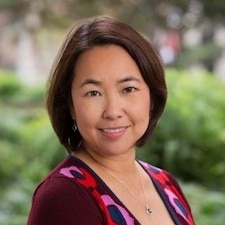
Neeracha Taychakhoonavudh
One of the pleasures of in-person conferences is the opportunity to introduce two friends to each other who you just know will hit it off. Lately, I’ve missed this kind of interaction more than ever. So, I invited Tony Wells, chief brand officer of USAA, and Michael Smith, chief information officer at the Estée Lauder Companies, to come over – virtually, of course – for some tea and a chat. The result was a candid conversation about their respective business challenges and common solutions from across the C-suite.
Hear the full conversation with Tony Wells and Michael Smith on the IT Visionaries podcast



Years before Wells joined the military-focused financial services company, he was an infantry officer in the Marine Corps. That’s where he first picked up a number of high-octane frameworks such as Observe, Orient, Decide, Act, better known as the OODA loop, designed to help officers make urgent, battle-primed decisions. Marines are trained to complete OODA loops as fast as possible, with the repeated cycles improving outcomes over time.
He’s brought the Marine mindset with him to the boardroom, taking his colleagues at USAA through OODA loops at much greater speeds than before. “We did a brand-new TV spot in literally nine days,” he said. “I hope that we can keep some of that muscle memory in corporate America.”
Smith, who helms the high-tech digital infrastructure of iconic cosmetics powerhouse Estée Lauder, shares the imperative for speed. The coronavirus pandemic has accelerated his plans to deliver a personalized consumer experience across all of the Estée Lauder Companies’ digital channels: mobile, social, and even in-store hybrid. “The beauty consumer today is moving fast. They expect us to keep pace,” he said.
Both Wells and Smith believe big companies will embrace a hybrid work culture in the wake of the pandemic; many of Smith’s employees are eager to return to the state-of-the-art IT facility in Long Island City. Both they also believe in the power of communicating their brands’ essence to younger employees. With their different backgrounds and professional experiences, it was cool to see that Smith and Wells had quite a bit to learn from each other.
Neeracha Taychakhoonavudh: Michael, what can non-technology executives learn from your role as CIO at Estée Lauder Companies?
Michael Smith: I would encourage non-technology executives to really think deeply about how technology might not only disrupt their industries or their firms, but even just the small day-to-day responsibilities that their teams have. A lot of times we think about large industry disruption, but a CIO can help an organization think about how to optimize day-to-day responsibilities.
Taychakhoonavudh: Tony, you are not from a technology function. How do you work with your tech colleagues?
Tony Wells: You know, it’s an interesting challenge. When I first started in the brand function, IT would go do something, roll out a new website, bring a new technology, and then there’d be this big unveiling. But now I think it’s a deep collaboration. There’s been a lot of articles written about how the marketing or the brand function is controlling more and more of the IT budget, but we know that the IT experts have the knowledge to implement this. In our case, we have some joint agile teams that are working side by side.
Smith: I think Tony hits on a key point, which is this idea of co-creation and not developing some great technology alone and then trying to do a big reveal. Each brand at the Estée Lauder Companies has a technology lead that collaborates with a brand lead to execute the experiences and make sure they’re authentic and unique to each of the brands. Our industry is very high-touch, and the ability to do physical testing, or trying on products, has not been available to our consumers this year. Now, technology and digital are at the center of the majority of our consumer experiences. This shift absolutely requires that technology teams and brand teams are completely in-step and completely co-creating.
Taychakhoonavudh: Michael, I understand your CEO Fabrizio Freda established a reverse mentoring program at Estée Lauder Companies, where younger employees coach older employees on the issues that matter and the way the next generation works.
Smith: Yeah. You know, the reverse mentorship program is just incredible. This program allows us to see inside the minds of our consumers – primarily Millennials and Gen Z – which enables us to think more strategically about how our technology meets our business needs. The reverse mentorship program helps us stay connected with our consumer and better understand what they value so that we can build solutions that simplify and enhance their lives.
Taychakhoonavudh: Tony, I’d love your perspective on this as well. Gen Z employees entering the workforce have such different expectations for a brand and its values. How do you manage that?
Wells: Yeah, I think there are a couple of ways where this is all intersecting. As we’re talking about Gen Z, we know that the purpose of our brand has to resonate with them. In corporate America, there’s a lot of things that we’re going to have to look hard at: employee health, safety, and welfare. Brand purpose, I think, is paramount and king. You need the ability to communicate your purpose and make sure your employees, no matter what their age or background or demographic, feel like they belong and feel heard and that they’re included.
Smith: Tony, you know, our industries may look very different, but I think we’re rooted in many of the same principles and backgrounds. This idea of high-touch service and serving our consumer is critical to both. I’m interested in learning a bit more about the direct to consumer strategy at USAA pre-pandemic. How did it evolve, and what are those implications going forward?
Wells: We are trying to be mindful that a military member who’s currently serving is strapped for time. So, whether it was establishing our first 1-800 number or a remote deposit capture, which allows you to take a picture of a check and send it in, or a feature that allows you to take a picture of your car where it may have a fender bender and do the claim virtually. Our members are often deployed somewhere around the world, and their spouse is trying to keep the fort going and keep the family activity going. We’re building experiences with that focus and mindset. As long as you approach it with the idea of reducing pain, reducing challenges, or meeting a customer need, I think the brand will be successful.
Taychakhoonavudh: I think understanding your consumer or member is key to having that empathy. Tony, what would you want to learn from Michael and his experience at the Estée Lauder Companies?
Wells: You know, I would imagine cosmetics is a very, very personal purchase. I’d love to know, Michael, how you go about personalizing the digital experience, trying to bring humanity and empathy to it.
Smith: Yeah, you hit it spot on. It is a very personal purchase. Our interaction with consumers is extremely high-touch – you know, sitting down with a beauty adviser and really getting to know each other. Now, technology is a key enabler to being able to create something that is very unique to each individual. Look at what we’ve done with Clinical Reality for Clinique, where we can analyze the skin digitally and make a specific, personalized recommendation for the customer’s regimen. So, it’s a new world. And I think for a beauty consumer, this has to be super exciting.
Taychakhoonavudh: And it fits in so well with the brand promise of Clinique, right? The scientific approach to skin care. Well, thank you. Thank you, Tony. And thank you, Michael.
This article originally appeared in Vantage Point, a Salesforce magazine



